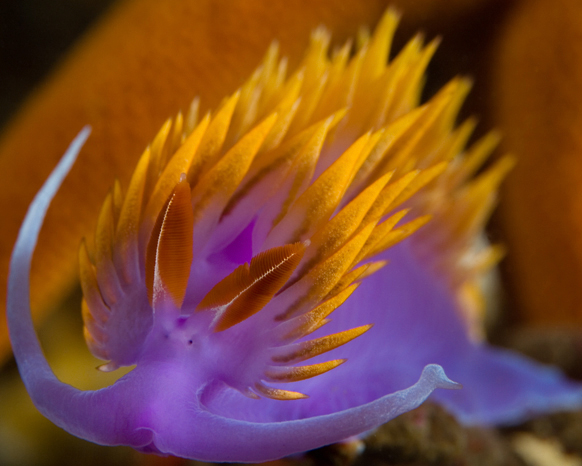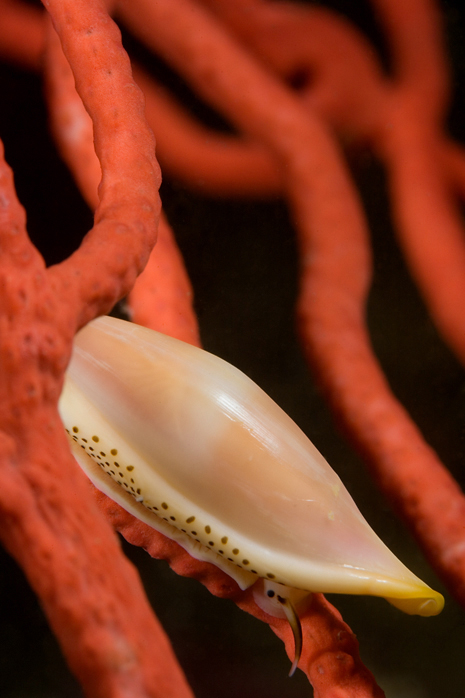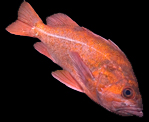
February 17, 2007

The vibrant colors of a Spanish shawl (Flabellina iodinea) provide
photographers with great raw material. Of course, there's always a catch: These
inch-long slugs flap violently in the surge like one of those cat toys made from
rubber bands on the end of a stick. As such, getting the rhinophores in focus is
often an exercise in frustration. Even a really good macro lens has difficulty
autofocusing on this type of subject. This shot was taken using a fixed focus
and fine movements of the photographer's hand to achieve focus by moving the
entire camera forward and backwards. The blurry orange arms are those of a blood
star (Henricia leviuscula).
"Shale Island", Monterey Bay, California
February 17, 2007

Often, when I show a picture to a non-diving friend, the first question they ask
is "How deep were you when you took that?". The implication, of course, being
that the deeper the depth, the better the photograph must be. This, then, is the
very best photograph on the site. This simnia, Delonovolva aequalis,
lives on red gorgonians(Lophogorgia chilensis). If you'd like to see one
in the Monterey area, you'll have to make a relatively deep dive. This picture
was taken 120ft. At this depth, the photographer's senses were impaired the
equivalent of two and a half glasses of scotch. Likely this photograph would not
have been taken at all had not the boat's anchor landed smack on top of this
very gorgonian. To be sure, this squished the subject somewhat, but also reduced
the photographer's drunkard walk (or, swim) towards the dive's turnaround point
to a voyage of only inches. In truth, diving to this depth without the benefit
of helium in one's breathing gas isn't very smart. I'm actually a little
surprised I didn't get distracted and start taking pictures of the leprechauns
also commonly seen after about 100ft.
"Deep Shale", Monterey Bay, California
February 17, 2007





